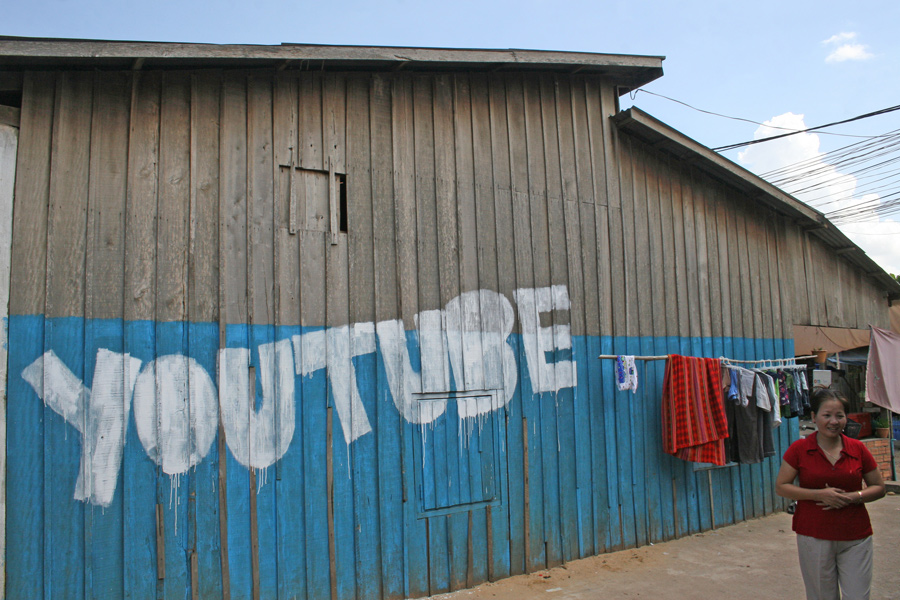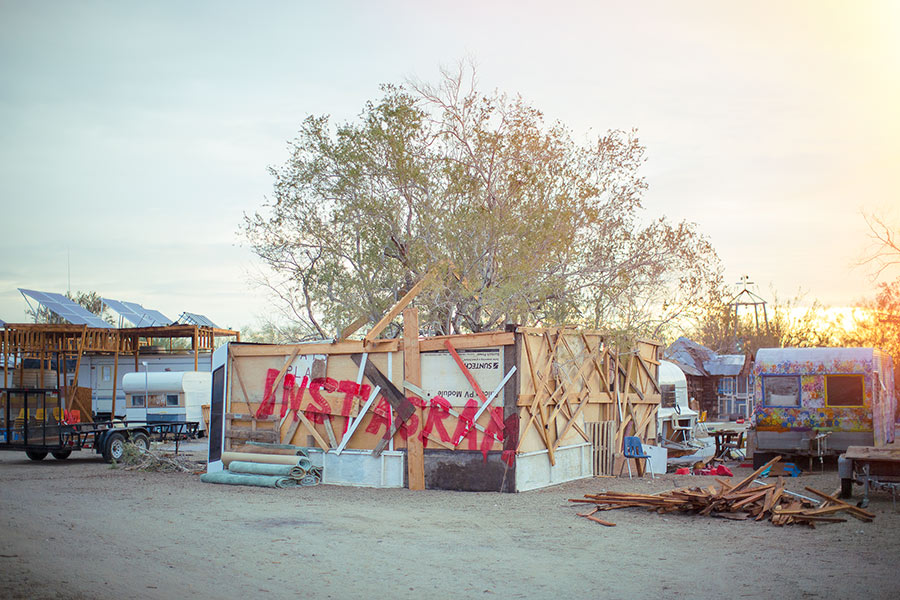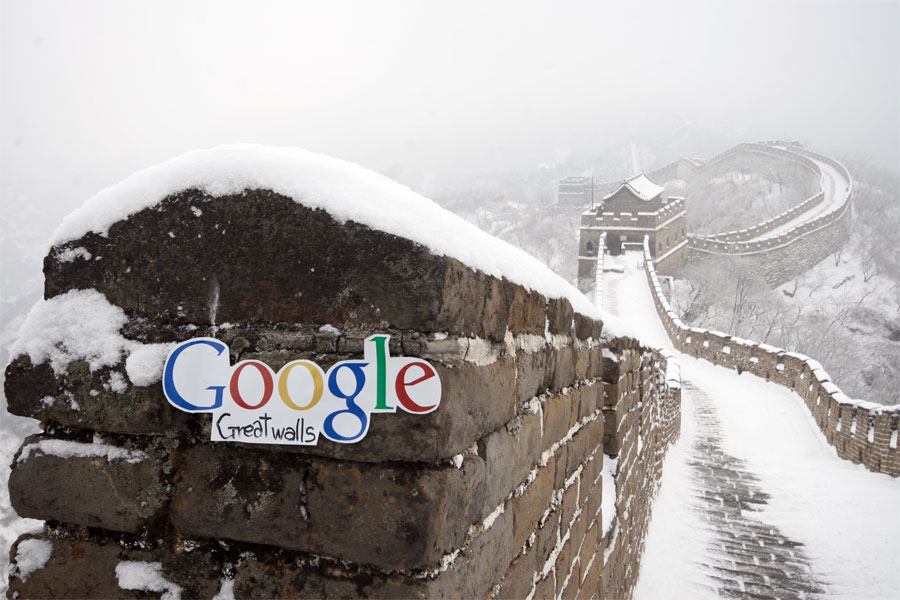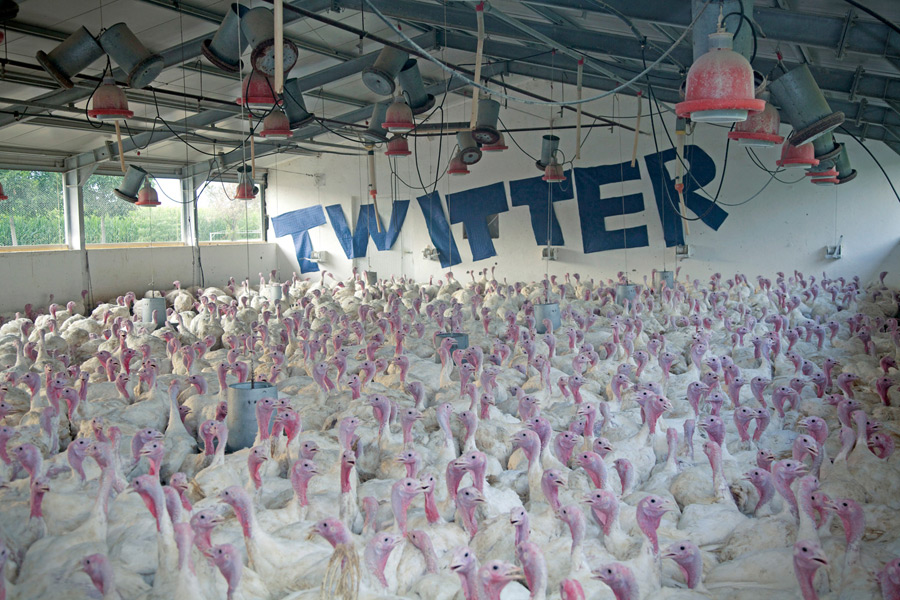Contradictions
YEAR
2007-2014
LOCATIONS
Cambodia, Vietnam, Mali, China, Italy, USA
Minelli’s artistic disseminations
Art in this new century must not only take into consideration 2.0 technologies but should most of all create contradictions, emergencies, and disruptions of the frames they impose, given their complete control over our lives: Google Maps telling us where we are, Record Future where we will be, and Facebook who our friends are. But how can these tools be used to show the political differences that revelations of place, future, and friends leave out? When we type “Flickr” or “Facebook” in a browser, we seek to enter social networks and enjoy secure communication and interaction with a vast numberof online users from around the world. But if we paint these names on the walls of slums in Mali, Cambodia, or Vietnam it is to create artistic dissemination.
Minelli, by traveling to the slums of Vietnam and painting ‘Twitter’ on its walls is not only indicating the contradiction between these two worlds (advanced technological capitalism and its social discharge) but also disclosing the hidden frames imposed by social networks.
This seems to be the goal of Filippo Minelli’s art of emergency that consists of writing the names of social networks and corporations on the walls of slums in developing countries. Although the young Italian artist stated that the aim of the project, called ‘Contradictions’, was ‘to point out the gap between the reality we still live in and the ephemeral world of technologies’there seems to be more at stake, considering the different political and linguistic meanings these words acquire in their new contexts.
His works are presented as photo essays from the borders of the West, demanding not only our interpretation but also intervention, considering that they are calls to overcome the status quo, the lack of emergency these networks have created.
These networks,and the Internet in general, are the culmination of Being’s (existence) replacement with beings (objects), that is, with the global technological organisation of the world, as Martin Heidegger would say. Existence is now not only topologically framed but also predictable, since the future can even be forecast through online data mining; the problem is not the possible emergencies we might face but rather the ones we are missing. ‘The lack of emergency’, as Heidegger explained in the late thirties, ‘is the greatest where self-certainty has become unsurpassable, where everything is held to be calculable, and above all, where it is decided, without a preceding question, who we are and what we are to do.’ In this condition, where knowledge and existence are framed beforehand by dominant social networks or programs, there is little space for freedom within these networks, or even beyondthem. Minelli’s photographs overcome these frames through the disruption they create when we see ‘YouTube’ painted on the walls of a slum in Cambodia rather than on our own screens. But how does Minelli manage to involve us in this linguistic and political contradiction?
As most readers of Jacques Derrida know, when he altered the French word ‘différence’ (difference) by substituting an a for the e—“différance”—he was producing a graphic modification (‘it is read, or it is written, but it cannot be heard’) in order to overcome the traditional metaphysical precedence of truth and presence over writing and difference. Minelli’s dissemination of these social networks is very similar to Derrida’s disordering of metaphysical truth because it forces us to encounter these words in a different context, where they cannot be “heard” (that is, met in the usual way, as a seemingly casual destination in our address bars) but must be read in the juxtaposed world of his photographs. Reading ‘Flickr’ on the walls of a slum discloses the frames of the screens that condition much of our interaction now and also requests our involvement, that is, demands that we make an effort to autonomously interpret its new meaning.
‘Whoever does not succeed in becoming an autonomous interpreter’, as Gianni Vattimo pointed out, ‘perishes, no longer lives like a person but like a number, a statistical item in the system of production and consumption.’
As we can see, this différance is a matternot only of indicating how “literality alters”, that is, how the word “Facebook” assumes new meanings in new contexts, but of how ungrounded the social networks are revealed to be through these disrupted meanings. If “Second Life,” “Flickr,” or “Google” cannot cover all contexts it is not for technical restrictionsbut because they would not exist without the condition that makes their repetition possible: the absence of “absolute anchoring”, that Derrida ascribed to contexts and Mimelli to 2.0 technologies.
The Italian artist’s photographs are not points of arrival for our aesthetic contemplation but rather points of departure to change the world, a world that needs further artistic disseminations to overcome its digital frames. The fact that Minelli has now extended his project to different words (‘Control-Alt-Delete’ and ‘Democracy’) on dangerous borders (Qualandyia Checkpoint) and in unstable nations (Mauritania) is an indication his disseminations are driven by hope of emancipation, that is, salvation. Whether this salvation arrives is not up to the artist, who has the obligation to disrupt our frames, but rather to those interpreters who recognize the new meanings and the différance revealed by his photographs.
Santiago Zabala is ICREA Research Professor at the University of Barcelona, 2013







